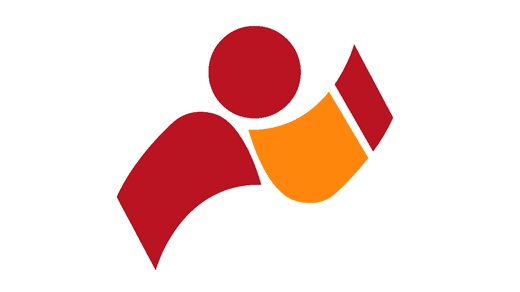Vom frühen Kontakt, Transparenz und langfristigen Beziehungen
December 18, 2011 Leave a comment
Im Rahmen meiner Abschlussarbeit zum Controlling von Social Media-Aktivitäten im Personalmarketing habe ich mich kürzlich u.a. mit Christoph Fellinger (Employer Branding & Talent Attraction, Beiersdorf) unterhalten. Er berichtete mir von Karrierechats an Samstagen und wie sich Personaler im Netz ansprechbar machen sollten. Das gelte vor allem für Recruiter und diejenigen aus dem Personalmarketing, die auch nach außen hin Kontakte knüpfen. Diese Aussage hat mich seitdem beschäftigt und scheint mir die Kernvoraussetzung für erfolgreiches Talent Relationship Management (TRM) zu sein: Identifizierbar, ansprechbar, erreichbar sein – denn nur aus dem direkten Kontakt können langfristige Beziehungen erwachsen. Dazu gehört aber auch, den Arbeitgeber und seine Employer Value Proposition (EVP) frühzeitig erlebbar zu machen.
Dieser Gedanke ist keinwegs neu. Bereits im Februar bezeichnete Employer Branding Today TRM als die Zukunft von HR. Dort heißt es: “isn’t it great to provide career inspiration from an early age? Surely, an individual is still given the free choice to decide what’s right for him or her, and the parents are always there to provide further guidance. For employer branding professionals managing relations from the start is a clever thing to do. If you want to secure your talent pipeline, it’s best to do it by targeting youngsters and trying to maintain the relationship along their path of personal development”. Die Deutsche Bank hat 2011 mit Spring into Banking ein Pilotprojekt in dieser Richtung gestartet. Das Angebot wendet sich allerdings nicht an Schüler, sondern an Erst- und Zweitsemester. Einen ersten Eindruck vermittelt das folgende Video:
Spring into Banking war augenscheinlich so erfolgreich, dass es nicht nur in 2012 die nächste Auflage gibt. Mit Spring into IT wurde außerdem ein Veranstaltungskonzept entwickelt, das sich der heiß begehrten Zielgruppe der IT-nahen Studierenden widmet. Wie schwer es ist, um das Interesse und die Begeisterung von angehenden ITlern zu werben, wird wohl jeder Recruiter im Finanzsektor wissen. Google, Apple, Microsoft und Co. sind hinlänglich bekannt und attraktiv. Doch was soll ein ITler eigentlich bei einer Bank oder einer Versicherung? Hier heißt es erst einmal überhaupt ein Bewusstsein dafür schaffen, dass Finanzunternehmen auf eine leistungsstarke IT setzen, etwa um Trades im Millisekunden-Takt realisieren zu können.
Talente schon zu Beginn ihres Studiums mit dem Unternehmen und dem jeweiligen Fachbereich bekannt zu machen, ist sicherlich eine gute Antwort auf diese Herausforderung. Doch bringt das natürlich auch nur etwas, wenn über die eigentliche Veranstaltung hinaus Kontakt gehalten wird – beispielsweise zur Vermittlung eines Praktikums. Wie das in institutionalisierter Form gelingen kann, zeigt Bosch: Mit dem PreMaster Programm wurde ein Angebot geschaffen, das Studierenden neben dem Erwerb umfangreicher Praxiserfahrung durch ein Gap Year auch eine praxisnahe Betreuung während des Master-Studiums garantiert. Dazu kommt die Mitgliedschaft im studentischen Talentpool sowie die Möglichkeit auch im Ausland zum Einsatz zu kommen.
 Ablauf PreMaster Programm von Bosch (Quelle: e-fellows.net)
Ablauf PreMaster Programm von Bosch (Quelle: e-fellows.net)
Engpassgruppen gibt es nicht nur in der Industrie, sondern auch im Finanzsektor. Das drängendste Problem wird aber eher nicht sein, mehr Schülerinnen und Schüler dazu zu bewegen, ein MINT-Studium zu wählen. Viel mehr geht es darum, die Besonderheiten des Banking herauszustellen und dafür zu begeistern – gleichermaßen die begehrten ITler, die Juristen und HRler. Daher lohnt sich ein Bestreben hin zum frühen Kontakt, zu Transparenz und zu nachhaltiger Beziehungspflege. Ein spannender Ansatz ist für mich deswegen The Unofficial Guide To Banking – eine Microsite auf Initiative der Deutschen Bank. Dort wird mit Mythen aufgeräumt, der Banking-Jargon erklärt und es werden verschiedenste Rollen im Detail vorgestellt. Das könnte doch auch Vorbild für andere Branchen sein?
Eine nützlich Rolle können auch Social Media-Aktivitäten zur Begleitung der vorgestellten Veranstaltungen und Programme spielen. Sie helfen, den Kontakt und die Beziehungen aus der Offline-Welt in die Online-Welt zu verlängern. Das kann z.B. über den Hinweis auf die unternehmenseigene Karriere-Page auf Facebook geschehen. So verweist die Allianz regelmäßig bei Events und Praktikantenveranstaltungen auf Allianz Karriere. Dort unterhalten sich eine Vielzahl aktueller und ehemaliger Praktikanten, Workshop-Teilnehmer aber auch Mitarbeiter. Bei der HypoVereinsbank – Member of UniCredit engagieren sich die Recruiterinnen und Recruiter im direkten Kontakt: Auf der Karriere-Website und in den Stellenausschreibungen wird explizit und unkompliziert zur Kontaktaufnahme und Vernetzung per Xing, LinkedIn oder Telefon aufgerufen.
Im Kern geht es aber bei allen Aktivitäten immer um den individuellen Kontakt und das individuelle Erleben des Bewerbungsprozesses, also die Candidate Experience. All die schönen Microsites, Social Media-Plattformen und Veranstaltungen nützen nichts, wenn der persönliche Kontakt zu Unternehmensvertretern im Vergleich massiv abfällt. Es ist die Aufgabe eines jeden Recruiters, eines jeden Personalmarketing- und Employer Branding-Spezialisten, das Arbeitgeberversprechen glaubhaft zu vertreten und erlebbar zu machen. Viel mehr sollte es sogar das Selbstverständnis sein. Und dazu kann dann schon einmal gehören, auch am Wochenende spontan für einen kurzen Karrierechat bereit zu stehen.
















